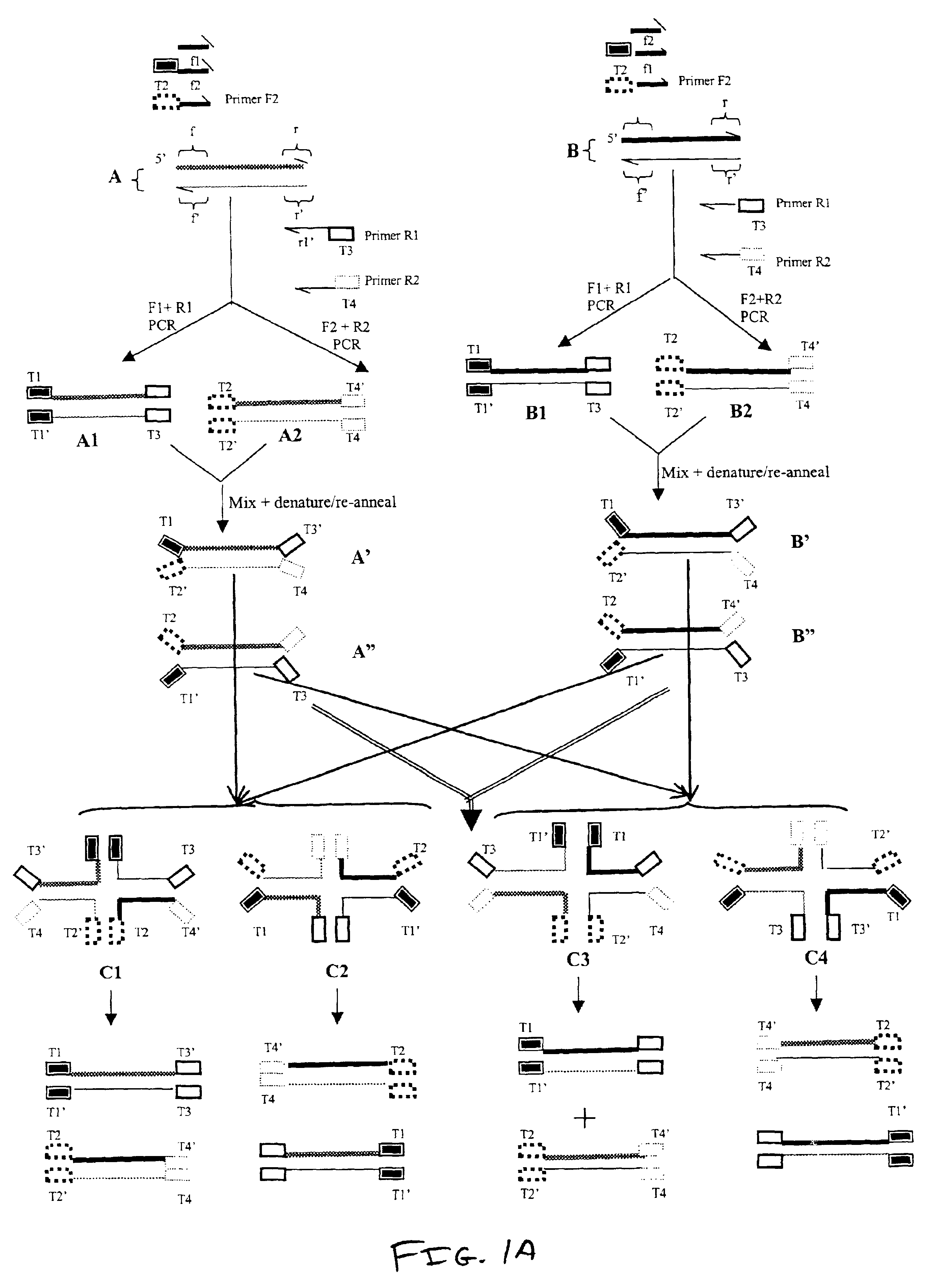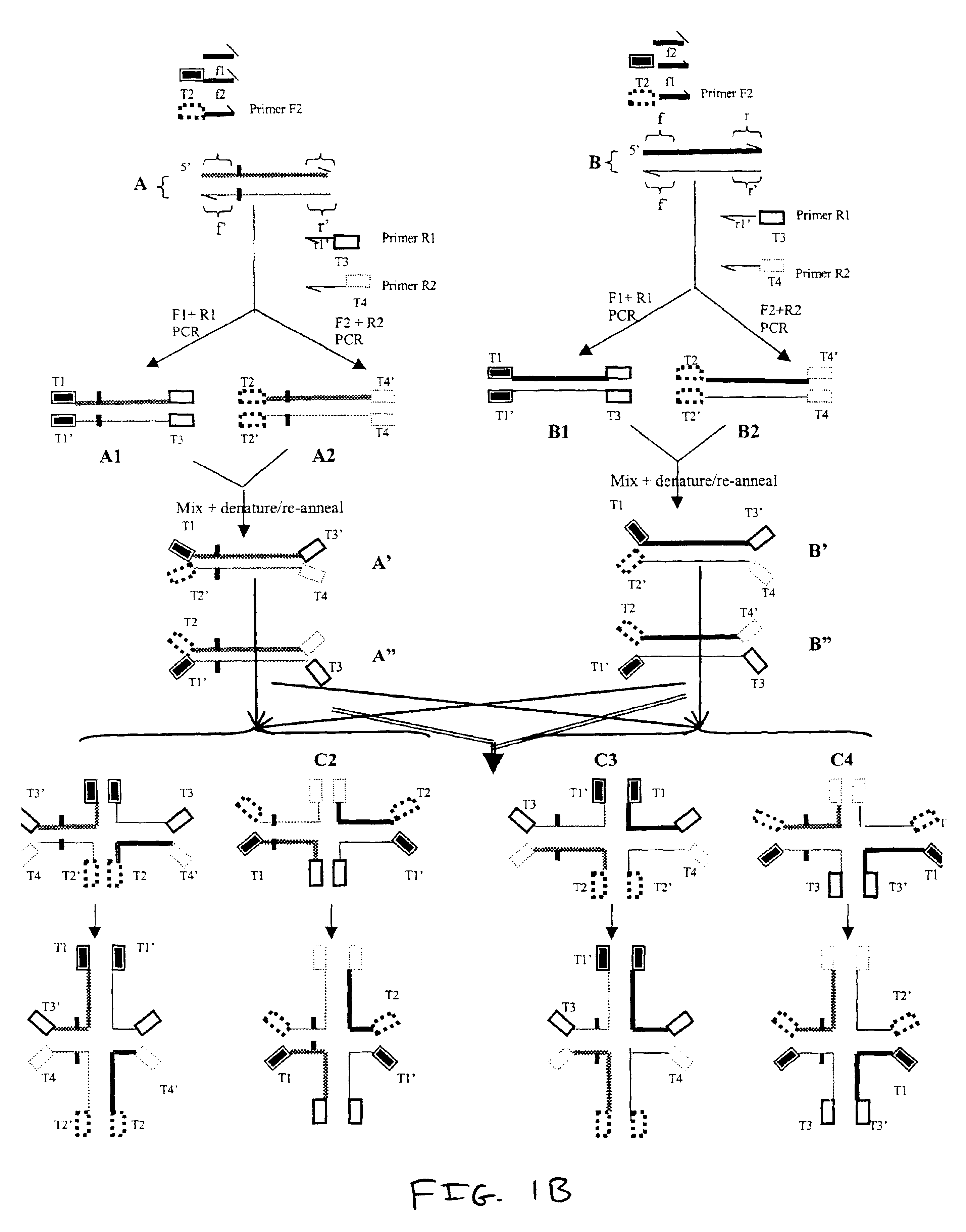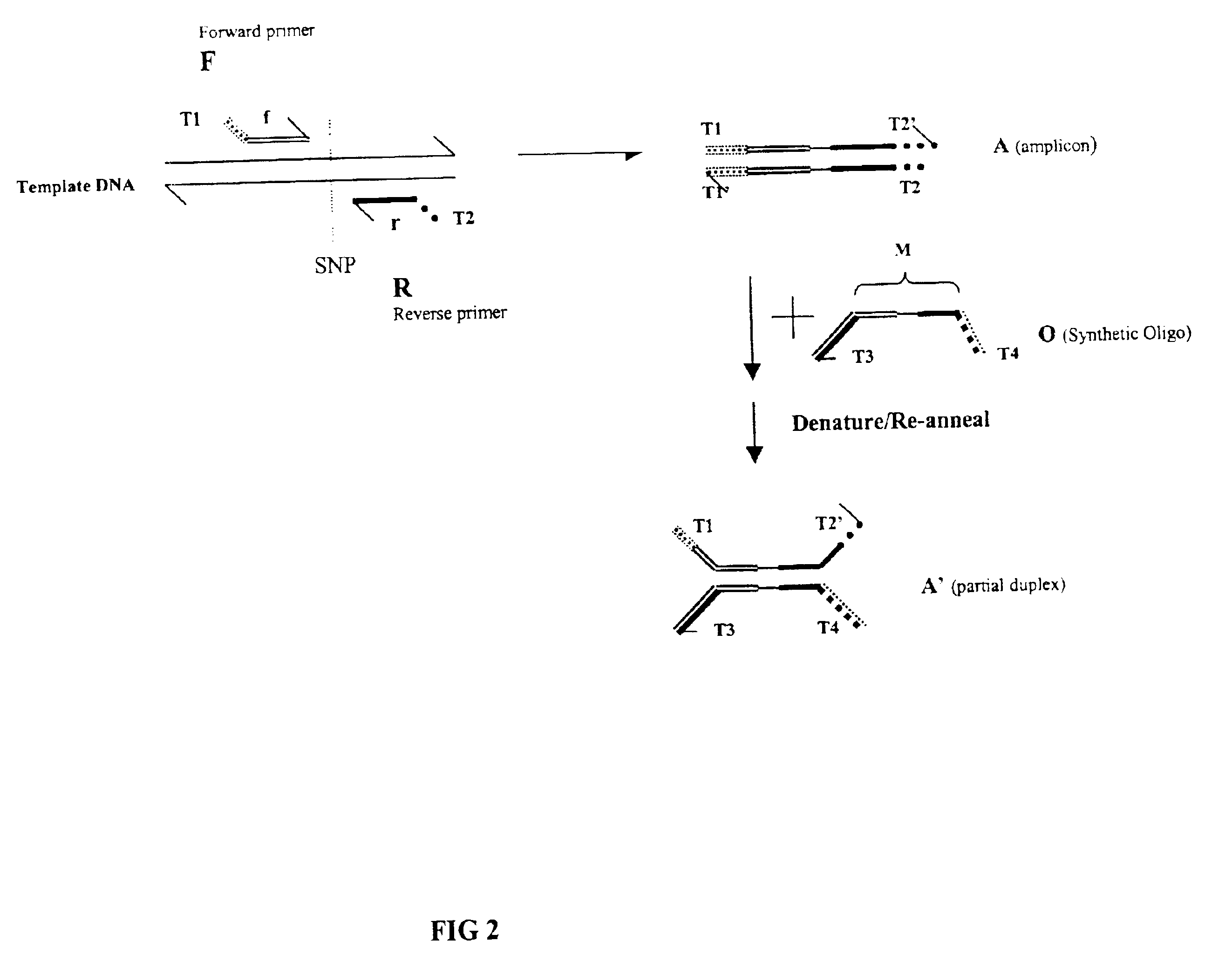Methods and compositions for detecting differences between nucleic acids
a technology of nucleic acid and composition, applied in the field of molecular biology, chemistry and nucleic acid hybridization, can solve the problems of poor accuracy, high cost or low throughput, and current hybridization-based genotyping methods such as snp-chips or micro-arrays often lack sufficient sensitivity and/or accuracy to detect many snps simultaneously with a uniform set of conditions
- Summary
- Abstract
- Description
- Claims
- Application Information
AI Technical Summary
Benefits of technology
Problems solved by technology
Method used
Image
Examples
example 1
6.1 Example 1
Construction of Tracer Molecules
In this example, several tracer molecules were synthesized and evaluated for use in the methods of the invention. The tracer molecules of this example are useful for detecting differences between any pair of nucleic acids including pairs of nucleic acids from the Examples below.
All oligonucleotides were purchased from Operon Technologies Inc. (Alameda, Calif.).
In this example, several tracer molecules were made with nucleic acids that were synthesized and linked to fluorescent labels. The nucleic acids were capable of forming stabilized four-way complexes. These nucleic acids were examined to identify a tracer molecule / molecules that displays a low polarization value in an unbound state and a high increase in polarization value upon binding RuvA protein.
The first potential tracer molecule is the four-stranded nucleic acid HJ.sub.24. HJ.sub.24 comprised the following polynucleotide strands, each having 24 nucleotides:
Strand 1 of HJ.sub.24 ...
example 2
6.2 Example 2
Preparation of Nucleic Acids
In this example and the examples that follow, compositions and methods for the detection of differences between nucleic acids using fluorescence polarization according to the present invention are demonstrated. In this example, tailed reference nucleic acid and tailed target nucleic acids were prepared for use in the methods.
Five regions of human genomic DNA that contain known single-nucleotide polymorphisms (SNPs) were PCR-amplified using tailed reverse primers to enable the formation of four-way complexes. The sequence of these regions, the location and identity of the respective SNPs within them and the sequences of the primers can be found in the National Center for Biotechnology Information (NCBI) SNP database (NCBI). The NCBI accession IDs of the SNPs used were as follows: ss4215, ss4217, ss4213, ss4141, ss4212 and ss4030.
The genomic DNA samples were obtained from the M08PDR panel (Coriell Cell Repository, Camden, N.J.). Two genomic DNA...
example 3
6.3 Example 3
Genotyping by Fluorescence Polarizatation
In this example, the genotypes of eight genomic DNA samples of Example 2 were determined by fluorescence polarization measurements with RuvA and the tracer molecule HJ.sub.18 -2 of Example 2. The eight genomic DNA samples were amplified using primers specific for SNP 4215 as described in Example 1.
20 ml PCR product was subjected to branch migration in BMB buffer. To this sample, was added 80 ml 250 pM tracer molecule HJ.sub.18 -2 in BMB buffer and 2 ml 500 nM RuvA in BMB buffer.
After 10 min incubation at room temperature the mixture was analyzed using the Beacon 2000 Fluorescence Polarization Analyzer as described above. Table 3 provides the results of the assays.
As shown in Table 3, a stabilized four-way complexes in the genomic sample competes with the tracer molecule for RuvA protein binding. As such, the fluorescence polarization values of the tracer molecules in the samples with mismatched nucleic acids ("heterozygotes") was...
PUM
| Property | Measurement | Unit |
|---|---|---|
| pH | aaaaa | aaaaa |
| thermostable | aaaaa | aaaaa |
| fluorescent | aaaaa | aaaaa |
Abstract
Description
Claims
Application Information
 Login to View More
Login to View More - R&D
- Intellectual Property
- Life Sciences
- Materials
- Tech Scout
- Unparalleled Data Quality
- Higher Quality Content
- 60% Fewer Hallucinations
Browse by: Latest US Patents, China's latest patents, Technical Efficacy Thesaurus, Application Domain, Technology Topic, Popular Technical Reports.
© 2025 PatSnap. All rights reserved.Legal|Privacy policy|Modern Slavery Act Transparency Statement|Sitemap|About US| Contact US: help@patsnap.com



